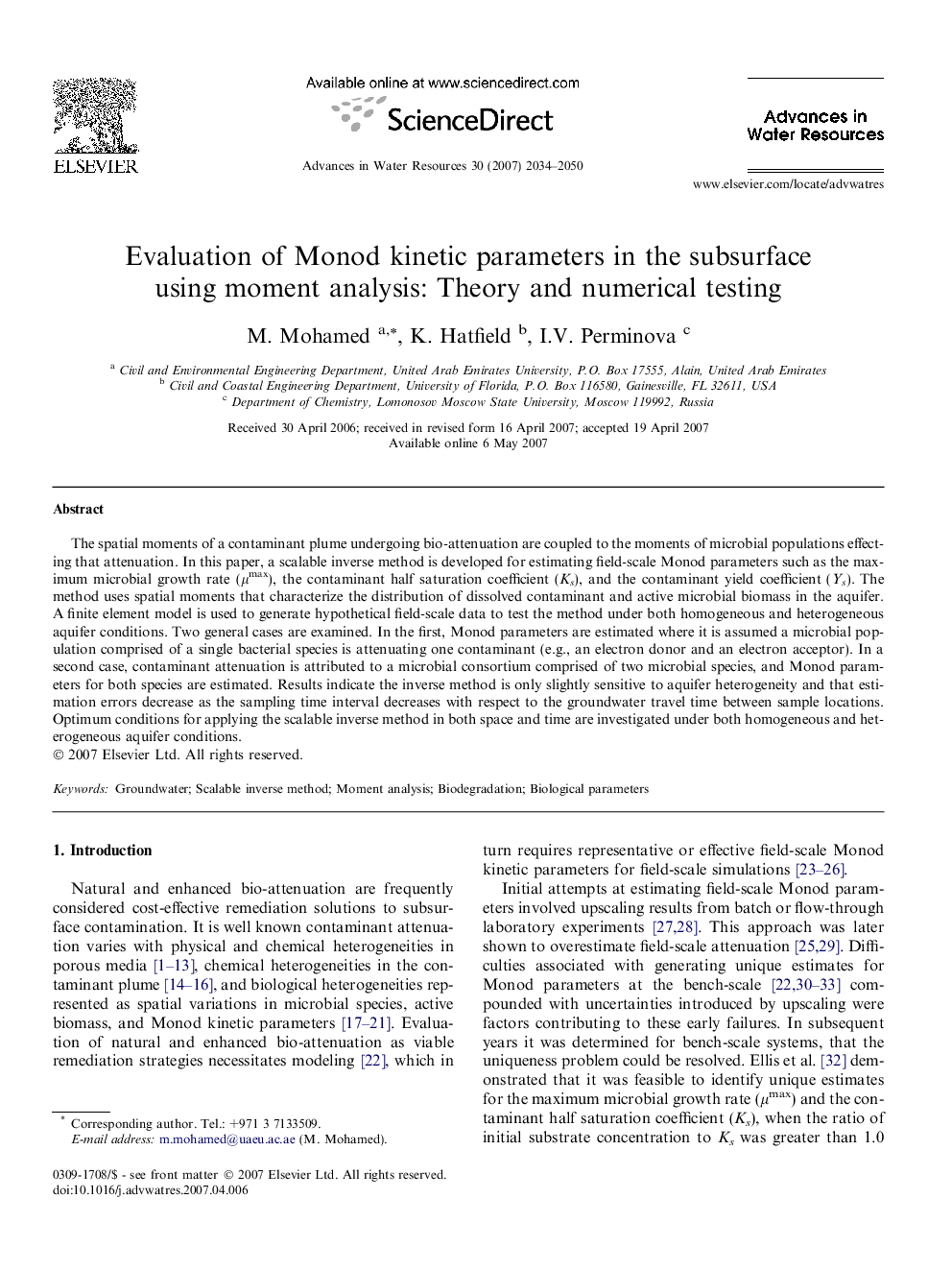| Article ID | Journal | Published Year | Pages | File Type |
|---|---|---|---|---|
| 4526690 | Advances in Water Resources | 2007 | 17 Pages |
Abstract
The spatial moments of a contaminant plume undergoing bio-attenuation are coupled to the moments of microbial populations effecting that attenuation. In this paper, a scalable inverse method is developed for estimating field-scale Monod parameters such as the maximum microbial growth rate (μmax), the contaminant half saturation coefficient (Ks), and the contaminant yield coefficient (Ys). The method uses spatial moments that characterize the distribution of dissolved contaminant and active microbial biomass in the aquifer. A finite element model is used to generate hypothetical field-scale data to test the method under both homogeneous and heterogeneous aquifer conditions. Two general cases are examined. In the first, Monod parameters are estimated where it is assumed a microbial population comprised of a single bacterial species is attenuating one contaminant (e.g., an electron donor and an electron acceptor). In a second case, contaminant attenuation is attributed to a microbial consortium comprised of two microbial species, and Monod parameters for both species are estimated. Results indicate the inverse method is only slightly sensitive to aquifer heterogeneity and that estimation errors decrease as the sampling time interval decreases with respect to the groundwater travel time between sample locations. Optimum conditions for applying the scalable inverse method in both space and time are investigated under both homogeneous and heterogeneous aquifer conditions.
Related Topics
Physical Sciences and Engineering
Earth and Planetary Sciences
Earth-Surface Processes
Authors
M. Mohamed, K. Hatfield, I.V. Perminova,
